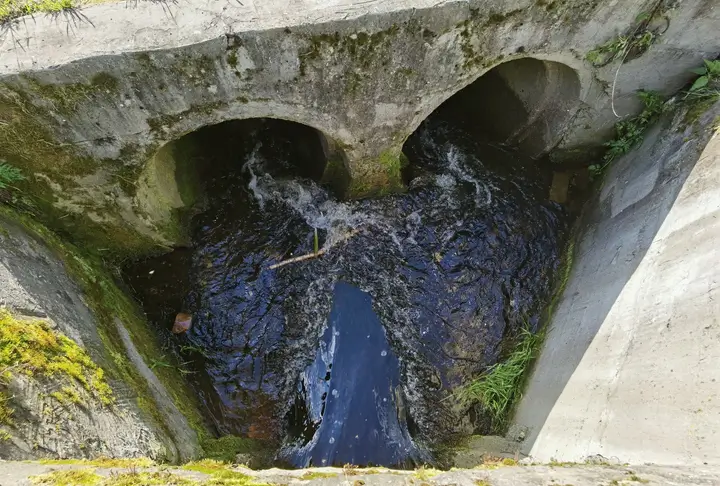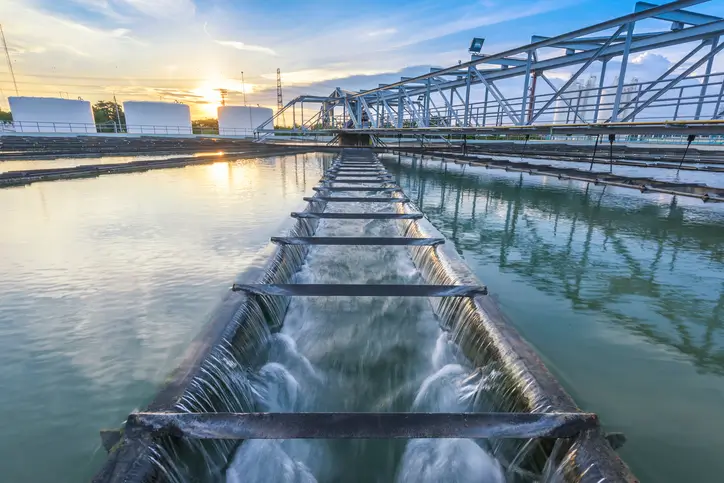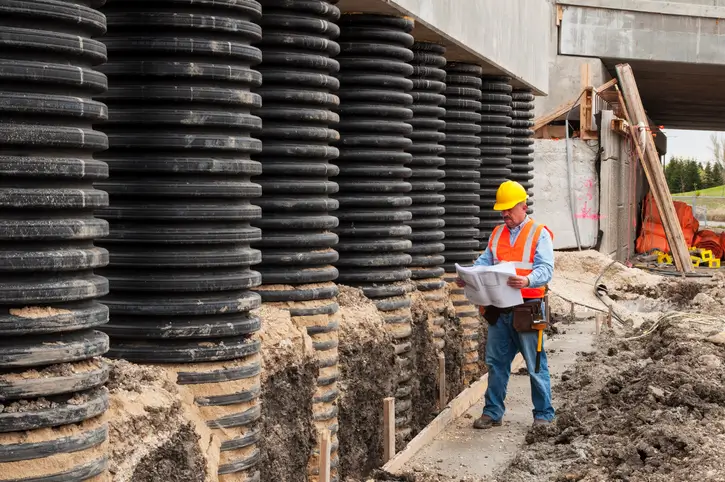When it rains, water doesn’t simply vanish, it flows. On natural landscapes, much of that water is absorbed by the soil, filtered by vegetation, and gradually reintroduced into groundwater systems. But on construction sites, where land is cleared, soil is exposed, and impervious surfaces are introduced, stormwater can become a serious hazard.
Stormwater management is the practice of controlling this runoff to reduce pollution, erosion, and property damage. On construction sites, where land is frequently disturbed and reconfigured, the need for effective stormwater control is even more pressing.
Proper stormwater management is not just about keeping a site dry. It’s a fundamental part of environmentally responsible construction, vital for meeting regulatory standards and ensuring the safety and efficiency of operations.
Here are five key reasons why stormwater management is critical on every construction site.
1. Prevents Soil Erosion and Sediment Runoff
Soil erosion is one of the most immediate and visible impacts of unmanaged stormwater on a construction site. When rain falls on exposed earth, especially on sloped or cleared areas, it can quickly wash soil away. Without vegetation or stabilizing measures in place, even a light rain can result in significant soil loss.

This runoff doesn’t stop at the edge of the site. Sediment is often carried into storm drains, rivers, and lakes, clouding the water and depositing pollutants far from the original location. These fine particles can suffocate aquatic habitats, disrupt ecosystems, and introduce harmful substances that are bound to the soil, such as heavy metals or residual chemicals. Sediment-laden water also raises treatment costs for municipal systems and can create long-term damage to downstream environments.
Erosion control measures, such as silt fences, check dams, and stabilized entrances, are essential for preventing these harmful outcomes and maintaining the integrity of the construction site itself.
2. Protects Local Water Quality
Construction sites are home to more than just soil. Fuel, oil, concrete washout, paints, solvents, and debris often accumulate in active areas. When it rains, these pollutants can be swept into nearby storm drains, which typically discharge directly into local waterways without filtration.

This runoff poses a serious risk to drinking water sources, public health, and aquatic life. Contaminants can alter pH levels, decrease oxygen availability, and introduce toxins to streams and lakes. Nutrient-rich runoff, particularly from disturbed soils or fertilizers, can also lead to algal blooms and dead zones in water bodies.
Protecting water quality requires a combination of containment, filtration, and good housekeeping. Installing barriers, covering materials, properly storing chemicals, and routinely inspecting equipment can dramatically reduce the amount of pollution that enters the stormwater system.
3. Reduces Flooding and Site Damage
Rainfall that isn’t managed can collect and flow across a site in unpredictable ways. Without proper drainage and grading, water can pool in work zones, flood trenches, damaged foundations, and delay critical operations. Uncontrolled runoff can also undermine roads, erode infrastructure, and displace construction materials.

Stormwater systems, including retention basins, drainage ditches, swales, and storm drains, are designed to intercept, redirect, and control this water. By managing the flow and volume of stormwater, these systems reduce the risk of onsite flooding and water damage.
Effective stormwater planning not only safeguards the physical integrity of the construction site but also supports project timelines. Fewer disruptions due to weather-related delays mean lower costs, fewer hazards, and more efficient completion of tasks.
4. Ensures Regulatory adherence
Stormwater management on construction sites isn’t optional; it’s required by law. In the United States, the Environmental Protection Agency (EPA) oversees the National Pollutant Discharge Elimination System (NPDES), which mandates permits for construction activities that disturb one acre or more of land.
These permits require developers and contractors to implement stormwater pollution prevention plans (SWPPPs) that detail how they will reduce runoff and prevent contamination. This includes erosion control measures, maintenance schedules, and documentation procedures.

Failure to adhere with these regulations can result in hefty fines, stop-work orders, and reputational damage. In many cases, non-adherence also leads to costly rework and project delays.
Understanding and meeting regulatory requirements is essential not only to avoid penalties but also to operate responsibly within the construction industry.
5. Promotes Sustainable Building Practices
Sustainability is no longer a fringe concern in construction, it is a central pillar of modern building practices. Managing stormwater is one of the clearest demonstrations of environmental stewardship on a job site. It reflects a commitment to minimizing the project’s impact on surrounding ecosystems and communities.

Effective stormwater strategies contribute to green building standards and can help developers qualify for sustainability certifications. Features such as permeable pavements, bioswales, rain gardens, and detention ponds not only manage water but also enhance the visual appeal and ecological value of the finished development.
Moreover, a visible commitment to stormwater control builds trust with the public. Neighbors, regulators, and future clients are more likely to support and recommend contractors who operate transparently and responsibly.
Conclusion
Stormwater management may begin with engineering controls and regulatory checklists, but its implications reach far beyond the boundaries of any single construction site. It plays a crucial role in protecting the environment, preserving public health, and ensuring that building projects are safe, legal, and resilient.
Construction professionals must take this responsibility seriously. Training workers, investing in proper equipment, and staying updated on local and federal requirements are all critical steps toward effective stormwater control. Beyond avoiding fines or delays, this investment supports a broader vision of building for the future, one where development coexists with healthy landscapes and clean water.





